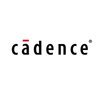Filter interviews by
Continental Device India Embedded Firmware Engineer Interview Questions and Answers
Continental Device India Embedded Firmware Engineer Interview Experiences
1 interview found
I applied via Approached by Company and was interviewed before Apr 2023. There was 1 interview round.
(2 Questions)
- Q1. How to integrate and differentiate signals through software embedded c for 8 bit , 16 bit architecture
- Ans.
Integrating and differentiating signals through software embedded C for 8-bit and 16-bit architecture involves utilizing appropriate data types and algorithms.
Use fixed-point arithmetic for 8-bit architecture to maintain precision
Leverage floating-point arithmetic for 16-bit architecture for higher precision
Implement algorithms like finite difference method for differentiation
Utilize digital signal processing technique...
- Q2. How to implement digital filter through software
- Ans.
Digital filters can be implemented through software by using algorithms such as Finite Impulse Response (FIR) or Infinite Impulse Response (IIR).
Choose the appropriate filter type based on the desired frequency response and computational complexity
Implement the filter algorithm in the firmware code using programming languages like C or assembly
Optimize the filter design for efficient memory usage and processing speed
Te...
Skills evaluated in this interview
Top trending discussions






Interview questions from similar companies

Software Engineer Interview Questions & Answers
Cadence Design Systemsposted on 7 May 2017
I appeared for an interview in Feb 2017.
Interview Questionnaire
7 Questions
- Q1. What is a malloc function and where is it used and how is it different from new?
- Ans.
malloc is a function in C that dynamically allocates memory on the heap. It is used to allocate memory for variables or data structures.
malloc is used in C programming language.
It is used to allocate memory on the heap.
malloc is different from 'new' in C++ as it does not call constructors for objects.
- Q2. What is the difference between C++ and Objective C and where will you use it?
- Ans.
C++ is a general-purpose programming language while Objective C is a superset of C used for iOS and macOS development.
C++ is widely used for developing applications, games, and system software.
Objective C is mainly used for iOS and macOS development.
C++ supports both procedural and object-oriented programming paradigms.
Objective C is an object-oriented language with dynamic runtime features.
C++ has a larger community a...
- Q3. What is the difference between class container and class composition?
- Ans.
Class container is a class that holds objects of other classes, while class composition is a way to combine multiple classes to create a new class.
Class container holds objects of other classes, acting as a collection or container.
Class composition combines multiple classes to create a new class with its own behavior and attributes.
In class container, the objects are typically stored in a data structure like an array o...
- Q4. There are fifteen horses and a racing track that can run five horses at a time. You have to figure out the top 3 horses out of those and you don't have any timer machine to measure. How will you find the t...
- Ans.
Divide the horses into groups of 5 and race them. Take the top 2 from each race and race them again. Finally, race the top 2 horses to determine the top 3.
Divide the horses into 3 groups of 5 and race them.
Take the top 2 horses from each race and race them again.
Finally, race the top 2 horses to determine the top 3.
- Q5. What is the most difficult problem that you have solved (during work) till now and why you think you could do so?
- Ans.
Developing a real-time data processing system for a high-traffic e-commerce website
Implemented a distributed system architecture to handle large volumes of data
Optimized algorithms for efficient data processing and storage
Utilized caching mechanisms to improve system performance
Worked closely with cross-functional teams to troubleshoot and resolve issues
Example: Successfully reduced data processing time by 50% by imple...
- Q6. Why you want to change your current job?
- Ans.
Seeking new challenges and opportunities for growth.
Looking for a more challenging role to further develop my skills
Interested in exploring new technologies and industries
Seeking better career advancement opportunities
Want to work in a more collaborative team environment
- Q7. What is the width of a tree? How will you calculate the width of the tree?
- Ans.
The width of a tree is the maximum number of nodes at any level in the tree.
To calculate the width of a tree, we can perform a level order traversal and keep track of the maximum number of nodes at any level.
We can use a queue data structure to perform the level order traversal.
At each level, we count the number of nodes in the queue and update the maximum width if necessary.
Interview Preparation Tips
Skills evaluated in this interview

I appeared for an interview in Nov 2016.
Interview Questionnaire
8 Questions
- Q1. A random number will be given as input to system,write a program to detect its data type(int or float ) without using size of function
- Ans.
This program detects if a number is an integer or a float based on its input format.
Use input() to get user input as a string.
Check if the string contains a decimal point to identify floats.
Use str.isdigit() to check if the string represents an integer.
Example: '123' is int, '123.45' is float.
- Q2. General hr questions
- Q3. Once again general hr interview questions
- Q4. 1.given a large rectangle
- Ans.
Need more context. What needs to be done with the large rectangle?
What are the dimensions of the rectangle?
Is it a 2D or 3D object?
What is the context of the problem?
Are there any constraints or limitations?
What tools or programming languages can be used?
- Q5. You will be given dimensions of a bigger rectangle and smaller rectangle,derive a formula to get how many smaller rectangles fit into the bigger rectangle
- Ans.
Derive a formula to determine how many smaller rectangles fit into a bigger rectangle given their dimensions.
Calculate the number of times the smaller rectangle can fit into the bigger rectangle horizontally and vertically
Divide the width of the bigger rectangle by the width of the smaller rectangle to get the horizontal count
Divide the height of the bigger rectangle by the height of the smaller rectangle to get the ve...
- Q6. How many points are required to draw a rectangle
- Ans.
At least 4 points are required to draw a rectangle.
A rectangle has 4 sides and 4 corners, so at least 4 points are needed to define those corners.
The points must be arranged in a specific order to form a closed shape with 4 sides.
Additional points can be used to add details or modify the shape of the rectangle.
The number of points required may vary depending on the software or tool used to draw the rectangle.
- Q7. What will be the new coordinates of a rectangle points if rectangle length and breadth is scaled and write a program to calculate the coordinates of corner points of scaled rectangle
- Ans.
Answering how to calculate new coordinates of a scaled rectangle and providing a program for it.
To calculate new coordinates, multiply the original coordinates by the scaling factor
Scaling factor can be calculated by dividing the new length/breadth by the original length/breadth
Program can take input of original coordinates, scaling factor, and output new coordinates
Example: Original coordinates: (0,0), (0,5), (5,5), (...
- Q8. Lastly a puzzle: i dont remember the question
Interview Preparation Tips
Experience: The test had three sections:
1.aptitude:It was like any other aptitude test,all it takes is a bit of practice to crack all the questions
2.C programming:Basics of c were asked,outputs of some programs,u have to be thorough with concepts of c
3.Electronics:The company hired for both profiles: 1. PDK:software
and 2.Logic library:hardware,so this electronics section was also there,questions are mostly Network analysis,cmos logic,digital logic,vlsi etc
u should have good basics to get the electronics questions of course they are not very hard,but not too easy
Tips: practice aptitude,basics of c programming and also basics of electronics
Duration: 1 hour 30 minutes
Total Questions: 60
Round: Test
Experience: after 1st round i was shortlisted to this technical round,i was asked this question, i suggested that i will convert that number into a string and check whether string has a dot or not to check if it is float or int,the interviewer was not very impressed but was ok and asked few small questions and promoted me to next round
Tips: If u crack test with top marks,the technical rounds will be very easy,because the interviewers do not ask tough questions for people who cracked written test with high marks
Round: Technical Interview
Experience: tell me about yourself,strengths,weakness,three principles u follow in life,etc
Tips: This round depends on you,dont try to bluff something,they will know if u are bluffing,take a breath and speak up ur mind,be confident u can do it
Round: HR Interview
Experience: same questions,but this time less duration,not involving lengthy discussions, i think this round was just for double check
Round: HR Interview
Experience: After the hr round,only seven were shortlist,this interview round was very much easy and they checked my approach to the given problem,they were checking how well i am thinking adding complexities to the given problem
Tips: they did not check my programming ability,but just problem solving skills,so be good at aptitude,by practicing as much as you can
Round: Group Discussion
Experience: after technical interview,4 were shortlisted,so they went for gd round,it was general topic,which checks your general knowledge
Tips: Dont be nervous,just speak what ever you know,never mind language issues
Duration: 20 minutes
Skills: for pdk profile :programming
College Name: NIT Warangal

Software Engineer Interview Questions & Answers
Micron Technologyposted on 9 Jul 2021
Interview Questionnaire
2 Questions
- Q1. Please go through the basics questions and programs.
- Q2. C#, SQL, Html, angular, asp.net, asp.net mvc basic questions

Senior Software Engineer Interview Questions & Answers
Mirafra Technologiesposted on 8 May 2021
Interview Questionnaire
2 Questions
- Q1. 1. Basic testing questions
- Q2. 2. Question related to API and sql

Software Engineer Interview Questions & Answers
Mirafra Technologiesposted on 13 Jul 2021
Interview Questionnaire
1 Question
- Q1. How do you rate yourself in c?
- Ans.
I consider myself proficient in C, with a solid understanding of its syntax, memory management, and data structures.
Strong Understanding of Syntax: I am comfortable with C's syntax, including pointers, arrays, and structures, which are fundamental to the language.
Memory Management: I have experience with dynamic memory allocation using malloc and free, ensuring efficient use of memory in applications.
Data Structures: I...

Interview Questionnaire
1 Question
- Q1. Line drawing algorithm , clone linked list

Senior Software Engineer Interview Questions & Answers
Broadcomposted on 11 Oct 2021
Interview Questionnaire
2 Questions
- Q1. Java, servlet jsp
- Q2. Redirction in java
- Ans.
Redirection in Java is the process of forwarding a request from one URL to another URL.
Redirection is achieved using the HttpServletResponse.sendRedirect() method.
It is commonly used for handling authentication and authorization.
Redirection can be permanent or temporary, depending on the HTTP status code used.
Examples of HTTP status codes used for redirection are 301, 302, and 307.
Interview Preparation Tips
Skills evaluated in this interview

(2 Questions)
- Q1. Python automation
- Q2. Network testing
Interview Preparation Tips

Software Engineer Interview Questions & Answers
Infineon Technologiesposted on 2 Jan 2025
I applied via LinkedIn and was interviewed in Dec 2024. There was 1 interview round.
(2 Questions)
- Q1. Basic fundamentals of cs, dsa
- Q2. Puzzles, os concepts
Interview Preparation Tips
Continental Device India Interview FAQs
Tell us how to improve this page.
Continental Device India Interviews By Designations
- Continental Device India Electrical Maintenance Engineer Interview Questions
- Continental Device India Senior Sales Engineer Interview Questions
- Continental Device India Embedded Software Developer Interview Questions
- Continental Device India DGM Interview Questions
- Continental Device India Production Engineer Interview Questions
- Continental Device India Embedded Firmware Engineer Interview Questions
- Continental Device India Intern Interview Questions
- Continental Device India Process Engineer Trainee Interview Questions
- Show more
Interview Questions for Popular Designations
- Software Engineer Interview Questions
- Senior Software Engineer Interview Questions
- Associate Software Engineer Interview Questions
- Embedded Software Engineer Interview Questions
- Embedded Engineer Interview Questions
- Embedded Software Developer Interview Questions
- Firmware Engineer Interview Questions
- Embedded Systems Engineer Interview Questions
- Show more
Overall Interview Experience Rating
based on 1 interview experience
Difficulty level
Duration
Interview Questions from Similar Companies
|
Senior Engineer
8
salaries
| ₹4.5 L/yr - ₹10 L/yr |
|
IT Manager
8
salaries
| ₹12 L/yr - ₹18 L/yr |
|
Assistant Manager
7
salaries
| ₹4 L/yr - ₹9.5 L/yr |
|
Production Supervisor
6
salaries
| ₹3 L/yr - ₹4 L/yr |
|
Diploma Engineer
6
salaries
| ₹3 L/yr - ₹4 L/yr |

Apar Industries

Molex

TDK India Private Limited

Micron Technology
- Home >
- Interviews >
- Continental Device India Interview Questions










